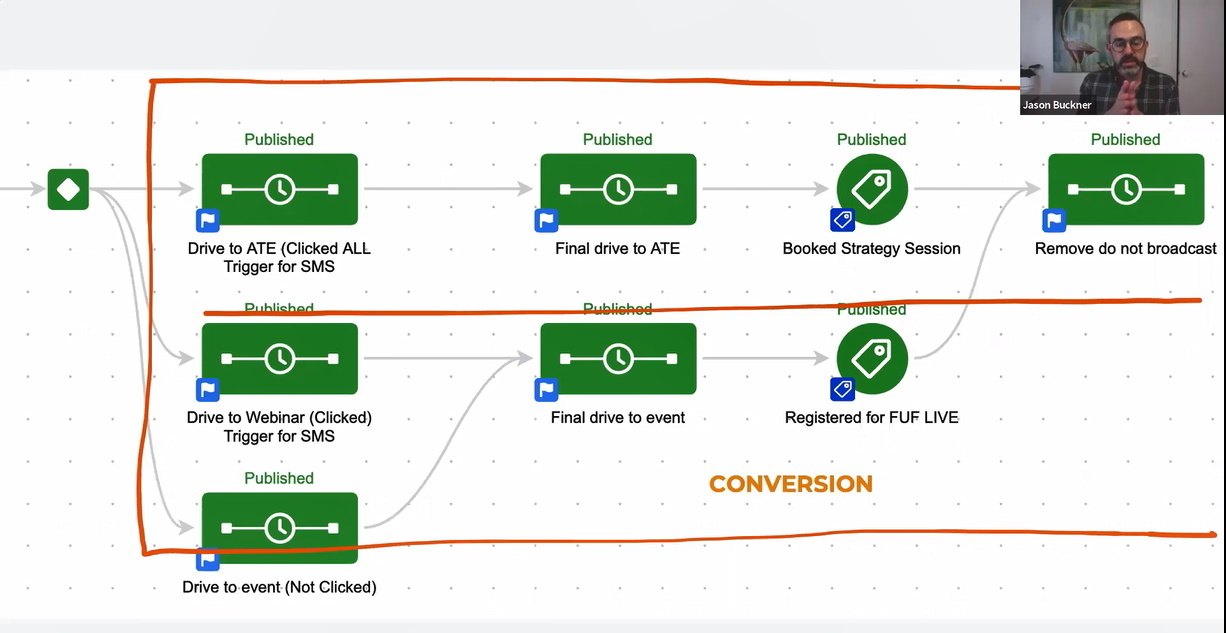The Third Biggest Mistake Small Businesses Make When Paying For Leads

In previous posts we’ve looked at the two biggest mistakes I see businesses making when it comes to paying for lead generation.
Mistake #1 is that they have no follow up process in place.
Mistake #2 is that they have no clear Call To Action (CTA) – or no Call To Action at all.
In this video I’m going to walk you through the third biggest mistake businesses make when paying for leads:
Mistake number three is not having tracking on those leads.
So it's all very well and good so far… these leads come into your business and they go into the campaign and there's some follow up emails, there might be some SMSs. (There are going to be some SMSs, I can tell you that right now. We'll come to that in a little while.) There's going to be emails and SMSs, and there’s stuff going out.
The leads are sitting in this campaign and all of a sudden do we really know what's happened to them?
Some people book in for a sales call, some people do a quote request, but what happens to all of the others? And all of a sudden, I don’t know where they are. I don’t know what's going on with them. They've gone into this list but I don't really know what to do with them. I don’t know where to find them… nothing happens… not many sales come out it.
Anyone felt like that before?
So I want you to picture this…
When someone registers, they go into a list and they start getting the emails and they start getting some follow in there. They start going into this campaign where we built this trust and we get them to take the action that we want them to take.
And then we always collect telephone numbers. You'll see why here for a couple of reasons.
First, I'm in the business of automation and I want to be sending them SMS as a first point of call.
Second, I'm in the business of automation and basically I get a lot of tyre kickers when I get opt-ins. So I make them give me their telephone number. If they register for a webinar, if they register for a lead magnet, if they register for anything, I make them give me their telephone number because those people that don't are less qualified than those people that do.
My cost of lead goes up much higher, but I get better conversions from the leads that come in because I have their telephone number.
Now, this is the important thing. When they engage in content – they click to download or they click on one of the videos – when they engage, I put them into what's called a sales pipeline. They’re pre-qualified, okay?
So these people have engaged in some of my content. I have that automatic follow up if they engage, but then this is the next step. They go into the sales pipeline pre-qualified. I make sure I have their telephone number – that’s super, super important. (That'll make sense in a moment.)
For those people that book in, the most qualified people booking go into “qualified” in the sales pipeline. (I’ll show you what I mean in a moment, it's all very visual.) And I get to make those calls first because they're the people that have identified, “Yes. I want this. I want to get onto a sales call with you.”
Then I call the pre-qualified people. That makes a little bit of sense, doesn't it?
So let's have a look at this example:

So once someone has downloaded the book and they've clicked on one of my videos, we automatically put them into pre-qualified. So that's the first section in the image above.
Then when someone's booked in for a sales call, we automatically then put them into our sales pipeline. They automatically go into the qualified and booked section. These are people that are in there and we can see at a glance exactly how many people have gone through the process and self qualified themselves.
And when we're on the sales call, we’re talking to the person and they're potentially going to be a customer, we put them into this converting phase and then we put a value in there.
Then I can see in the pipeline, all of a sudden, the potential earnings from this lead generation campaign that we've got going on.
So then when you've made all of those calls and you've put them into Converting or Won or Lost, what do we do?
Do we sit back and think, “Oh, this lead generation campaign's not really doing much. We've only got two calls booked. What am I going to do next? Am I just going to leave the other leads just sitting in there?”
No, absolutely not, because they're pre-qualified because we've collected telephone number.
What do you think we're going to do these pre-qualified people over here? We are going to get on the phone and we're going to try and either qualify those people, get them to book in a sales call, or have a sales call with them on the phone straight away.
Does that make sense? In actual fact, does it make sense not to be doing this?
You 100% can't afford to not do this in your business and just let the rest of those leads go.
And these calls don't necessarily have to be a direct sales call. It could be like, “Hey, I noticed you downloaded blah, blah. What do you think of it? What problems are you having that you need to know about doing such-and-such better in your business?”
It becomes an interactive kind of process where we are not necessarily selling to them, but we are finding out what the problems are so we can provide them with solutions there.
Can you afford not to be doing this in your business?
I don't think so.
We have to think about what we can do to make our business stand out more than everybody else's. We have to think about “What can I do with these leads that I'm paying for to come into my business, to get the most out of them?”
And this is just one technique that we can use to make sure we are making the most out of them. Don't sit back and wait for it to happen, be proactive and make this happen.
Join Our FREE
100% LIVE Masterclass
The 3 Biggest Mistakes You're Making When Paying For Leads…
That Are Costing You Thousands.
Want more useful strategies on how to avoid the biggest mistakes small businesses make when paying for leads?
Then click the button below now for full details and to register to attend our FREE live webinar:







